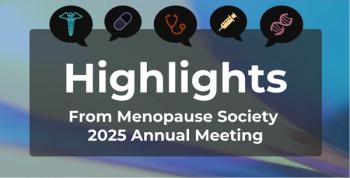
Pharmacists Strained by Time Pressures, Limited Resources in Diabetes Care
Key Takeaways
- Pharmacists face pressure to prioritize speed over patient education, impacting diabetes care quality and adherence to CGM devices.
- Independent pharmacy closures disproportionately affect underserved communities, worsening diabetes care disparities.
A CCS report found that pharmacists lack time for diabetes education as workloads rise, worsening disparities and threatening adherence.
As the number of Americans
The survey of more than 100 pharmacists across retail and community settings found nearly half (45%) believe individuals living with diabetes are not receiving the
“Pharmacists are being asked to do more and more and to work more quickly, which puts pressure on them to limit the amount of actual time that they spend in conversation with the individual,” said Marian Lowe, chief strategy and development officer at CCS, in an interview with The American Journal of Managed Care® (AJMC®). “That’s what makes it difficult for people with diabetes who need to understand complex equipment and the management of their condition that don't have another source of support to go to. If that pharmacist is their critical educator and they're not available, the risk of nonadherence and of not being successful with therapy is much higher."
Pharmacy Closures Worsen Access Gaps
Independent pharmacy closures have disproportionately affected Black and Hispanic communities, amplifying longstanding disparities in diabetes care.
“If you think about underserved populations and the fact that they might need more support than the average individual, the reduction of services in those communities makes it even more difficult for them to overcome what are historic and traditional barriers to access,” Lowe told AJMC.
The report emphasized that a team-based approach is essential to
Education Is Critical for Device Success
Proper onboarding and education for CGM devices remain essential for patient success but are often sacrificed due to time constraints. Lowe described effective onboarding as a hands-on, step-by-step process that helps individuals feel comfortable using their wearable devices. When that support is missing, she warned that the worst possible outcome is the device ending up in a drawer. A lack of proper training can lead to a number of issues faced by several stakeholders beyond the patient.
“Patients who are not adherent to their devices tend to experience higher costs,” Lowe explained. “If you don't get those alerts, the likelihood that you'll end up in emergency department or with some other complication—a hypoglycemic event—goes up. That's costly to the system, far more costly than anything that you can provide to that patient from an educational standpoint.”
Using Data to Identify At-Risk Patients
To support patient adherence, CCS is leveraging data and artificial intelligence (AI) through its proprietary PropheSee platform.2 By analyzing more than 2 decades of patient data—including insurance type, geography, household support, and previous adherence—PropheSee builds individualized risk profiles and assigns each person to a behavioral “persona.”
This segmentation allows CCS to identify those at risk for nonadherence, enabling early tailored interventions, Lowe told AJMC; highly adherent patients may require minimal follow-up, whereas those with financial or social barriers may receive more proactive outreach and coaching. It can also detected missed reorder patterns early, helping CCS reengage patients before gaps in use translate into adverse outcomes, costly hospitalizations, or issues with coverage.
“We’ve moved that signal way upstream to get in front of a bad event well before anybody else in the health care ecosystem even has the opportunity to intervene,” Lowe explained. “That's something that we're really excited about in terms of what we as a supplier can do.”
Aligning Incentives With Value
With the US diabetes population projected to reach nearly 55 million by 2030, Lowe said systemic change is needed to expand access and align incentives with quality rather than speed.1 According to her, the combination of the growing diabetes population and the number of patients ineligible for certain devices signals to her that points of access need to be expanded, not limited. Ensuring benefit parity across care channels, she said, would allow physicians and patients to choose the most appropriate setting for device education and support.
“If we are only measuring [pharmacists] on things like throughput, what we will get is throughput,” Lowe told AJMC. “We will not get value or quality, and that's not what any health care provider I've ever met wants to be known for. They want to be known for the quality of the interaction.”
References
- Reimagining diabetes care amid declining retail pharmacy access. CCS. October 7, 2025. Accessed October 7, 2025.
https://ccsmed.com/ccs-retail-pharmacy-access/ - Pharmacists strained as diabetes cases rise, and patients are paying the price. News release. CCS. October 7, 2025. Accessed October 7, 2025.
https://www.businesswire.com/news/home/20251007276048/en/Pharmacists-Strained-as-Diabetes-Cases-Rise-and-Patients-are-Paying-the-Price
Newsletter
Stay ahead of policy, cost, and value—subscribe to AJMC for expert insights at the intersection of clinical care and health economics.













































